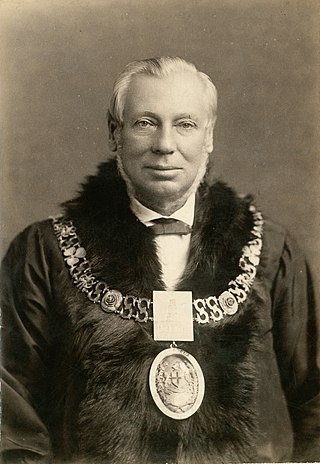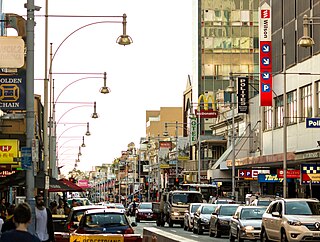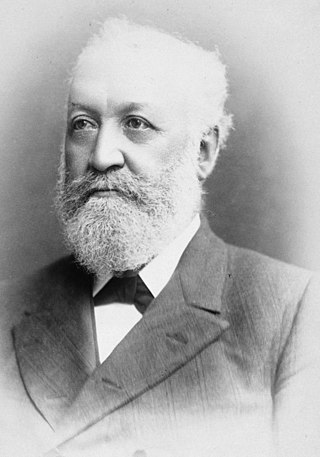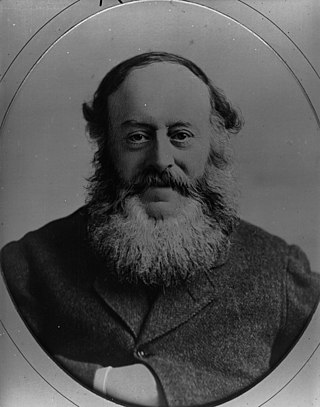Related Research Articles

William Bundey was an early settler of the colony of South Australia, a builder, and Mayor of Adelaide, South Australia from 1883 to 1886.
Uleybury is a rural locality near Adelaide, South Australia. It is located at the eastern side of the City of Playford local government area, just north of One Tree Hill along Gawler-One Tree Hill Road.

The Australian Institute of Architects, officially the Royal Australian Institute of Architects, is Australia's professional body for architects. Its members use the post-nominals FRAIA (Fellow) and RAIA. The Institute supports 14,000 members across Australia, including 550 Australian members who are based in architectural roles across 40 countries outside Australia. SONA is the national student-membership body of the Australian Institute of Architects. EmAGN represents architectural professionals within 15 years of graduation, as part of the Australian Institute of Architects.

Hindley Street is located in the north-west quarter of the centre of Adelaide, the capital of South Australia. It runs between King William Street and West Terrace. The street was named after Charles Hindley, a British parliamentarian and social reformist.

Edmund William Wright was a London-born architect in the colony of South Australia. He was mayor of Adelaide for 10 months in 1859. He designed many civic, commercial, ecclesiastical, and residential buildings in Adelaide city centre and its suburbs, in styles influenced by French and Italian Renaissance, as well as Neoclassical architecture. He collaborated with other notable architects E. J. Woods, Isidor Beaver, and Edward Hamilton in designing some of the most notable buildings.

Thomas English was a leading colonial architect in South Australia, Mayor of Adelaide (1862–1863), and a member of the South Australian Legislative Council 1865–1878 and 1882–1884.
James William Jones ISO was a South Australian surveyor and senior public servant.
The Adelaide Football Club, often referred to as the Old Adelaide Football Club, was an Australian rules football club based in Adelaide. Founded on 26 April 1860, it was the first football club formed in South Australia.

David Murray was a politician in South Australia.

Edward John Woods F.R.I.B.A. was a prominent architect in the early days of South Australia.
Henry Ernest Fuller, generally known as H. E. Fuller, was an architect, artist, and art critic in South Australia.
Isidor George Beaver, sometimes misspelt "Isidore" and "Beevor", and frequently initialised as "J. G. Beaver", was an architect from England who had a substantial career in Adelaide, South Australia and Melbourne, Victoria. He was also significant in the early history of ice skating in Australia.
Hedley Allen Dunn was a South Australian architect, a member of the prominent Dunn family of Mount Barker. His work included the flour mill at Port Adelaide for his father and grandfather in 1886, and the Stock Exchange Building on McHenry Street, off Grenfell Street, Adelaide, in 1900.
Joseph Jackman was the founder of Jackman's Rooms which incorporated a restaurant "Jackman's Dining Room", meeting rooms, dance hall and banqueting room at 48–50 King William Street, Adelaide, and several other cafes in Adelaide, South Australia.

Robert George Thomas was a draftsman and architect in the British colony of South Australia. He copied Surveyor-General Colonel William Light's original plan for the City of Adelaide and was later responsible for the design and execution of some of its significant buildings, including several churches in a Gothic style.
Daniel Garlick was an architect in the early days of South Australia. During his lifetime, his architectural practice names were Garlick & Son and Jackman & Garlick. After his death his name was perpetuated by two rival firms: Garlick & Sibley and then Garlick, Sibley & Wooldridge; and Garlick & Jackman and then Garlick, Jackman & Gooden.
The Pirie Street Brewery was a brewery situated on Pirie and Wyatt Streets, Adelaide, in the early days of the British colony of South Australia. It was succeeded on the same site after a few years by the Adelaide Brewery. Its original address was 50-62 Wyatt Street; today the buildings at 54–60 are heritage-listed in the South Australian Heritage Register, and there is a remaining building at 113 Pirie Street now occupied by the Hill Smith Gallery.

George Thomas Light, commonly referred to as G. T. Light, was an organist, instrument-maker, and architect in the early days of the British colony of South Australia.
Walter Bevan Charles Rutt OBE was a South Australian architect and philanthropist, a prominent worker for the Guide Dogs Association of Australia.
John Harrison Packard was a surveyor in the colony of South Australia. He served under G. W. Goyder in the initial survey of Port Darwin.
References
- ↑ "Architects' Association". Adelaide Observer . Vol. XVII, no. 936. South Australia. 10 September 1859. p. 2. Retrieved 14 April 2024– via National Library of Australia.
- ↑ "South Australian Association of Architects, Engineers, and Surveyors". South Australian Register . Vol. XXIII, no. 4050. South Australia. 6 October 1859. p. 3. Retrieved 14 April 2024– via National Library of Australia.
- ↑ "The Advertiser". The South Australian Advertiser . Vol. XXVIII, no. 8393. South Australia. 11 September 1885. p. 5. Retrieved 14 April 2024– via National Library of Australia.
- 1 2 "Architect Details: David Williams". Architects of South Australia. University of South Australia . Retrieved 11 January 2023.
- ↑ "South Australian Institute of Architects". The South Australian Advertiser . Vol. XXIX, no. 8787. South Australia. 16 December 1886. p. 6. Retrieved 16 April 2024– via National Library of Australia.
- ↑ "General news". The Express and Telegraph . Vol. XXIV, no. 6, 897. South Australia. 15 December 1886. p. 4 (First Edition.). Retrieved 16 April 2024– via National Library of Australia.
- ↑ Collins, Julie; Fazakerley, Ruth. "Beaver, Isidore(sic) George". Architects of South Australia. University of South Australia . Retrieved 16 April 2024.
- ↑ "General intelligence". South Australian Weekly Chronicle . Vol. XXIX, no. 1, 478. South Australia. 18 December 1886. p. 12. Retrieved 16 April 2024– via National Library of Australia.
- 1 2 University of South Australia. "Royal Australian Institute of Architects. South Australian Chapter". UniSA Research Data Access Portal. Retrieved 20 January 2021.
- ↑ Francis, Rosemary (2000). "Frank Kenneth Milne". Australian Dictionary of Biography . ANU . Retrieved 21 April 2024.
This article was published in hardcopy in Australian Dictionary of Biography, Volume 15, (Melbourne University Press), 2000
- ↑ Freeland, John Maxwell (1971). The Making of a Profession: A History of the Growth and Work of the Architectural Institutes in Australia. Sydney: Angus and Robertson. p. 201. ISBN 0207122393.
- ↑ South Australian Institute of Architects (1940), Quarterly bulletin [Catalogue entry], The Institute, retrieved 20 January 2021
- ↑ Royal Australian Institute of Architects. South Australian Chapter (1962), Quarterly bulletin [Catalogue entry], The Institute, retrieved 20 January 2021